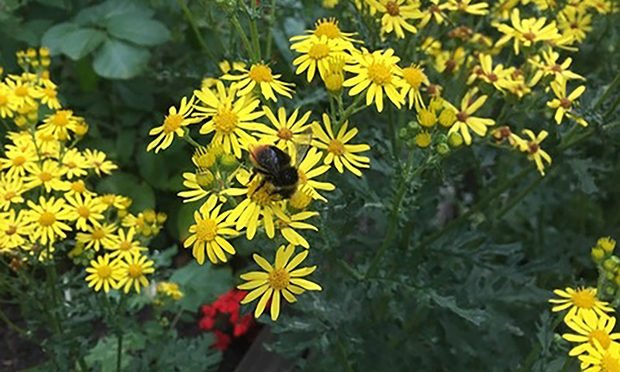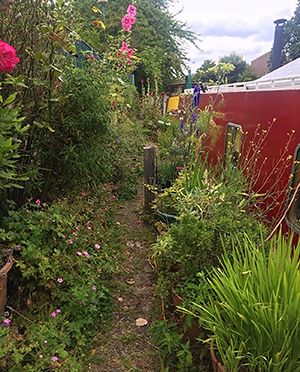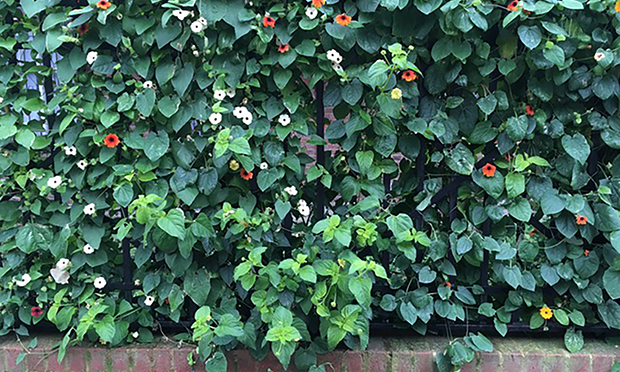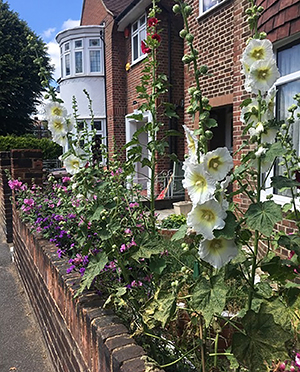The Citizen Gardener: Green corridors

There’s a story told by Richard Mabey in his wonderful book, Weeds, about Oxford Ragwort, the yellow daisy-like flower you see along railway tracks and streets in the summer.
It was brought to Oxford from Mount Etna by plant hunters in the 1700s and put in the botanic garden there. As plants do, it started to move, helped by the wind, over the wall and eventually to the railway station, about a 20-minute walk for human legs.
It took about 100 years for it to get to the tracks (built in the meantime) which are bedded on clinker, not unlike the volcanic rock of Etna. It migrated, like many of us, to London along the railway line where it hybridised and became our own version, London Ragwort, which now thrives in the warmer climate here.
Railways have become important wildlife corridors – pathways for plants, insects and animals to move around.

The Citizen recently reported on Network Rail cutting trees down along the track at Stamford Hill. It made me think about how important railways and roads are to the survival of our wildlife.
The environmental charity, Bug Life, says that our wildlife is now confined to tiny fragments of habitat and often unable to move across the countryside as our climate and landscape rapidly changes and we build on our gardens and other green spaces.
Although gardens account for about 34 per cent of London, they are shrinking as people pave over them.
Greenspace Information for Greater London (Gigl) estimates that the amount of hard surface has increased by 26 per cent since 1998/99 – along with a correlated decrease in greenery.
Gardens are also fragmented so wildlife gets stuck and isolated. It has been predicted that 40-70 per cent of species could go extinct if action is not taken to enable them to travel.
I went to a conference last year on verges (pretty niche, I know) where ecologists, councils, charities, volunteers, Highways England and many more inspiring people were trying to rescue the last wildlife corridors of the country. Verges along roadsides are havens for wildlife (unless it tries to cross the roads, which are strewn with foxes, deer, badgers and hedgehogs).
The verges and road margins are generally undisturbed and nature is allowed to live mostly unbothered. We looked at pictures of hazel dormouse nests and rare flowers finding refuge along the roadside.
According to charity Plantlife, more than 700 species of wild flower grow on the UK’s road verges – nearly 45 per cent of our total flora. And where wild flowers lead, wildlife follows. But many verges are mown short and often which inhibits this rich flora. They are asking us to encourage councils to reduce mowing both on verges (cut less and cut later) and in urban spaces with their annual #NoMowMay campaign.
Bug Life has for several years been developing B-Lines – a network of insect habitats and food sources around the UK. If you want to get involved, their website has loads of information to help support pollinators.

Here in Hackney we have 24 sites of importance for nature conservation – or SINCS. They range in size and complexity from big metropolitan ones like Hackney Marshes and Abney Park Cemetery through to small local ones like Clapton Common Pond.
Hackney Council has been planting trees, hedgerows, scrubland, grass areas, wildflower meadows and other wildlife habitats in its parks to increase biodiversity for years.
Despite this, the borough has already lost two bird species – the lesser spotted woodpecker and the tree creeper – since the 1990s. Other wildlife species like the hedgehog are also at risk.
The council has now commissioned the London Wildlife Trust to draw up a Hackney Nature Recovery Plan. The draft plan has a new proposal to connect the borough’s nature conservation sites by creating green corridors through built-up areas.

Green corridors will allow wildlife to forage, breed and move more easily across the borough.
Our own gardens and green spaces around housing estates make up a good proportion of Hackney’s open spaces. They offer important habitats for many species and play an important role in strengthening green corridors. The involvement of each of us individually and collectively in gardening, greening and other community groups will be vital to the success of the Nature Recovery Plan.
We can all do something: make a hole in your fence for frogs to travel between gardens; use boundary fences or walls to plant climbing plants; put a pot in your front garden or balcony as a resting place for a butterfly or bee; take up a brick or paving stone and see what appears; allow plants to grow in street margins and pavement cracks; don’t cut hedges until they have flowered; and allow plants in general to complete their life-cycle (grow, flower, fruit).
There are many small acts we can do to allow plants to flourish. Perhaps we need to think of our private spaces as part of a bigger thoroughfare for nature?
Kate Poland is an award-winning community gardener and the UK’s first ever postcode gardener in E5. For more, head to cordwainersgrow.org.uk and friendsoftheearth.uk
